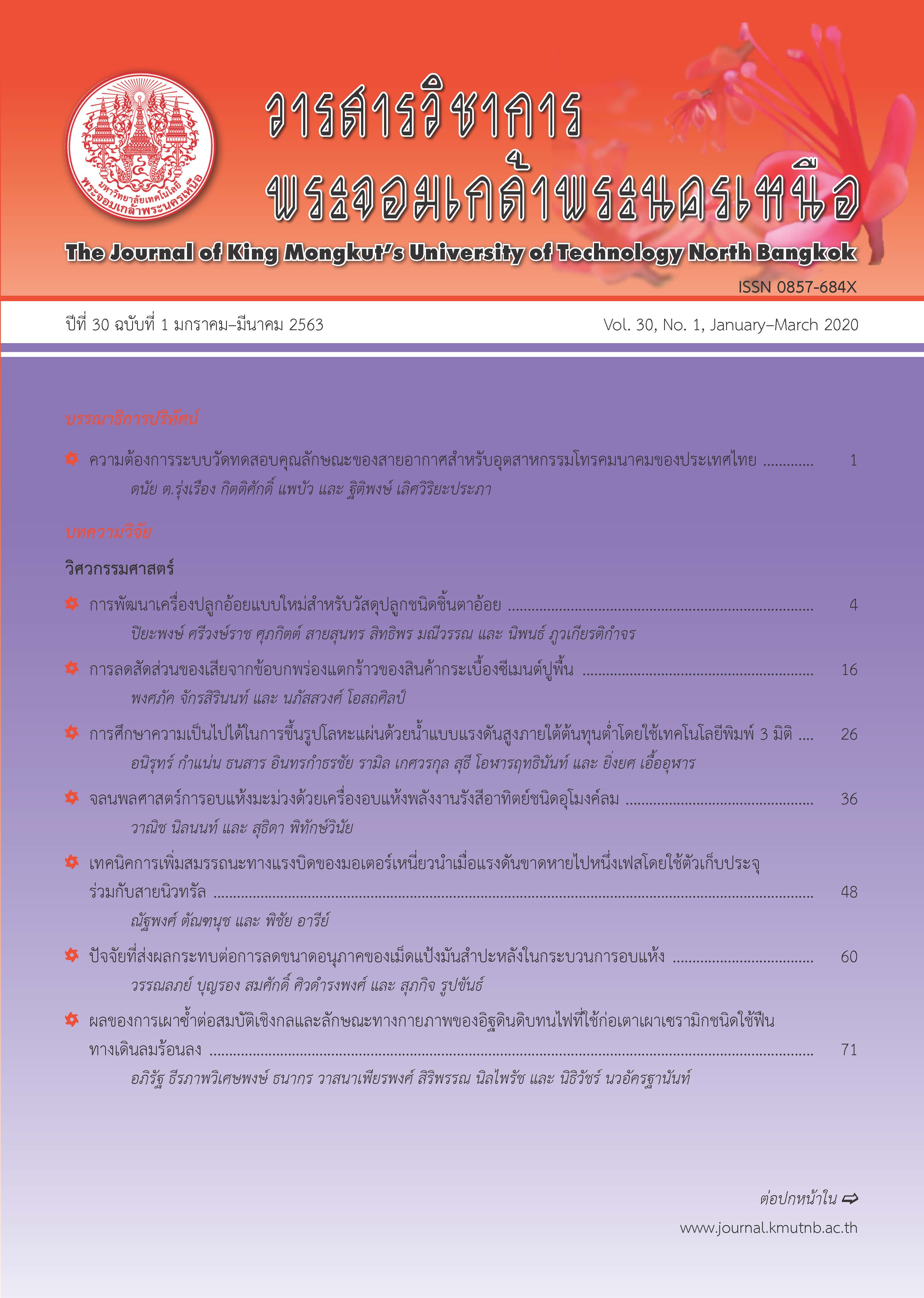Defective Reduction from Crack Defects in Cement Paving Tiles
Main Article Content
Abstract
The objective of this research is to reduce defects per unit from crack defects of 3.5 cm thickness cement paving tiles. This research adopted the Six Sigma improvement methodology and used the Center Composite Design (CCD) method to find appropriate levels of factors to minimize defects per unit from crack defects. The appropriate levels of factors were obtained by using steel beam concrete shuttle, body concrete shuttle height of 5 mm, facing concrete shuttle height of 5 mm and vibrating production force of 300 kN after improvement, defects per unit was decreased from 0.031 per unit to 0.011 per unit, which was lower than the goal of 0.012 per unit. This improvement is expected to reduce the defective cost of 794,650 Baht per year.
Article Details
The articles published are the opinion of the author only. The author is responsible for any legal consequences. That may arise from that article.
References
[2] N. Khajornpaisan and N. Rojanarowan, “The effect of oxidized white liquor on pulp brightness in peroxide bleaching in pulp mills,” Advanced Materials Research, vol. 974, pp. 230–234, 2014.
[3] S. Vivitchanont, “Defect reduction in precast concrete production,” M.S. thesis, Department of Industrial engineering, Faculty of engineering, Chulalongkorn University, 2010 (in thai).
[4] D.C. Montgomery, Design and Analysis of Experiments, 9 th ed. New Jersy: John Wiley& Sons, 2012.
[5] P. Wilkes, How to Manufacture Concrete Hollow Blocks. Forgotten Books, 2018.
